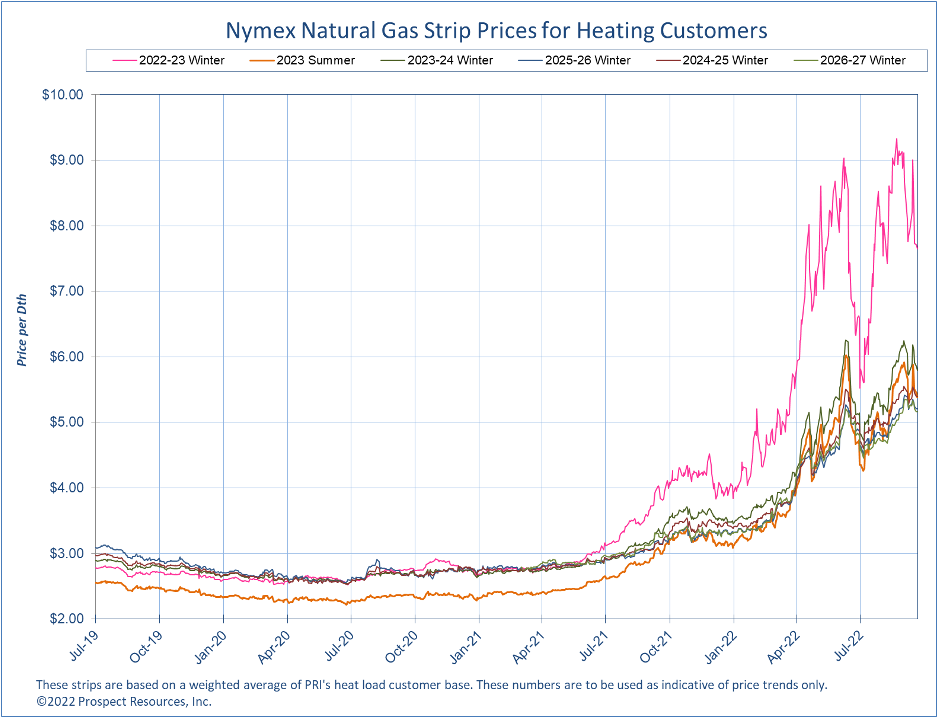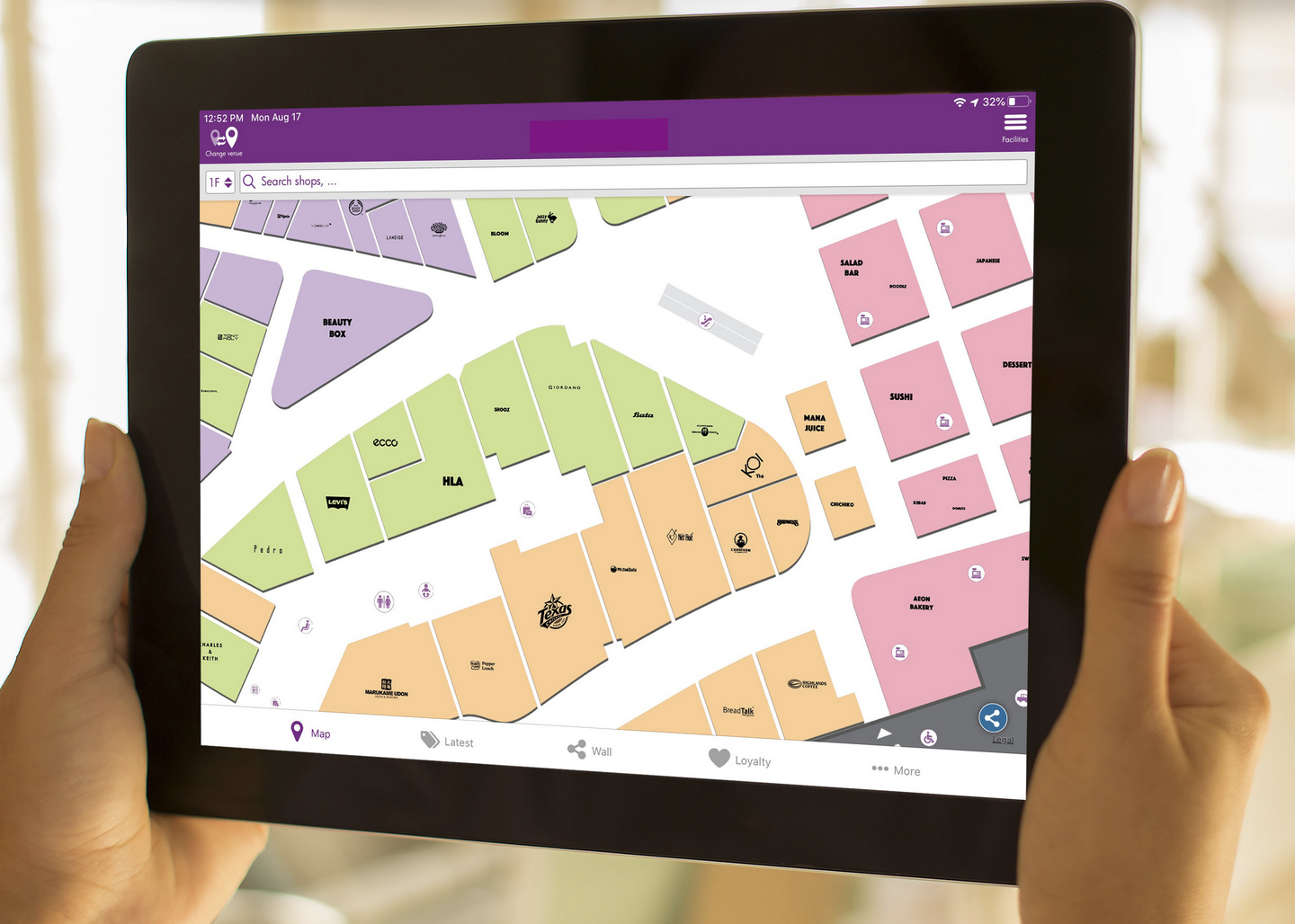How Building Managers Can Save on Energy Purchasing Through Changing Paradigms
Azi Feifel, COO at Prospect Resources
Posted 10/31/2022
Energy markets have always been volatile. Even when forward pricing is low, the pricing curves are smooth, and floating the market seems to make sense, you must be wary of inevitable volatility. When it does hit, it can be cruel and financially devastating. At the time of this writing, the natural gas market has been at dramatic highs for at least 18 months:

Electricity forward pricing curves have generally followed natural gas futures. Their volatility and unpredictability have caused quite a bit of financial hardship on a global scale for many households and businesses. The ultimate question is what to do moving forward.
We are at a difficult point in time. Geopolitical events have shifted markets, ultimately impacting facilities’ bottom line in terms of energy consumption. Worldwide, facilities’ energy usage ebbs and flows according to needs. Office buildings abandoned during the COVID-19 pandemic may never regain full occupancy. Shopping centers losing customers due to both the pandemic and a technology-based shift to online shopping may need to reevaluate their operational requirements. Large apartment complexes may find their hours of peak energy consumption changing with work-from-home trends. How can we save on energy purchasing?
One thing is clear – the status quo will not work. Facility managers need to ask themselves – What are the new energy paradigms that we must acknowledge, and what past practices are no longer smart or relevant? How can volatility be mitigated, and what strategies can be used to ensure it is not a major driver in rising operating costs?
First Paradigm Change – How to think about energy
There are many options in energy procurement, but most properties are presented with a single decision point – How long do I want to book an all-in fixed price? At that point, you are already behind the eight-ball. The first paradigm shift has to address this – Property and facility managers need to come to the realization that contracting for energy is not like buying tables and chairs or any other similar commodity. Rather, energy procurement should be treated as a financial services activity, like the pursuit of investments. What measures have been taken to manage risk, both upside, and downside? What measures have been taken to diversify the activity so that all of your eggs are not in one basket?
Second Paradigm Change – How to select a consultant/broker
Some organizations are large enough to have an individual or department dedicated to energy purchasing/procurement. Sometimes, that energy procurement function also serves as a profit center, staffed by experienced and knowledgeable energy specialists. Often, however, they are operating with no real understanding of energy markets.
It is imperative that every organization have a broker or consultant that really studies markets and has access to analytics that guide purchasing decisions. That entity must have many strategic options available for its clients. The days of the routine signing of fixed-price all-in electricity contracts should be in the past. If that is all that a broker or consultant is offering, you should move on; you need a new procurement paradigm.
You need to demand the following:
◦ Various purchasing options beyond locking 100% of your energy price at once.
◦ Detailed analysis of various layered hedging strategies.
◦ Ability to benefit from price dips during the term of the current contract – you cannot get this from an all-in fixed price.
◦ Intense day-to-day account management after your contract is signed. Don’t allow a broker or consultant to take it easy after you have signed a contract.
◦ In-depth analysis of proposed capital energy savings projects – don’t expose your properties to underwhelming results when so much more has been promised.
◦ All-inclusive budgets: Energy, non-energy, utility charges, state and local taxes.
If your broker or consultant cannot deliver on ALL of the above points, then you are being short-changed!
Third Paradigm Change – How to Incorporate Demand in Procurement Decisions
Facilities managers must be familiar not only with how much energy the property uses but also with how that energy is used. Whereas usage or consumption is measured in kWh and reflects how much electricity is used over a period of time, demand is measured in kW and reflects how much electricity is needed at a given point in time. Utility charges will often be based on Peak Demand, and that will be reflected on the utility bill. Demand can be reduced by either replacing equipment or modifying what equipment is running at any point in time.
Different types of buildings have different energy-demand patterns. A few examples:
1. Commercial facilities, such as office buildings, typically consume the most energy during peak hours. These hours are also the most expensive. Building systems may be running during off-peak hours, but those energy needs are relatively less compared to the weekday push.
2. Apartment complexes and condominium associations typically use the most energy during off-peak hours, when tenants are home at night, and when they utilize the pool, gym, and other common areas. This means facilities managers may be able to curtail peak usage during work hours. Restricting power to certain parts of the facility or installing motion-detecting light sensors during peak hours can help to manage energy use in the evenings and on weekends.
3. Some facilities, like healthcare establishments, must keep all systems running 24 hours a day, seven days a week, so there is no option to limit energy demand. This type of usage pattern has its advantages and disadvantages. On one hand, 24/7 facilities have consistent, reliable energy demand patterns, so it is relatively simple to calculate energy supply needs. Facilities with steady, reliable patterns of usage have better load factors, so their electricity will be slightly cheaper – even though more power is being used overall because the power must be on all the time.
Granular understanding in this area will lead to much better strategic planning and procurement decisions.

Azi Feifel
Azi Feifel is the Chief Operating Officer at Prospect Resources, a leading strategic consulting firm focused on energy procurement. He is a veteran of the hydronics industry, with many years of experience in the production of pumps, valves, boiler controls, steam specialties, and fire pump systems. Azi has been heavily involved with pump and motor redesign with a focus on energy efficiency. He holds a number of technical certifications, including Certified Quality Engineer, Certified Reliability Engineer, and Six-Sigma Black Belt. Azi is also an adjunct professor of economics and finance. He can be reached by email at [email protected]
Related Articles

Engineered Building Maintenance

Achieving "Near Zero" Refrigerant Emissions in HVAC Systems

HVAC Attack - How to Select the Right HVAC Filter for the Job

What Is Facilities Management? Challenges, Solutions, & More

How a Platform Approach Can Transform Your Building Operations




